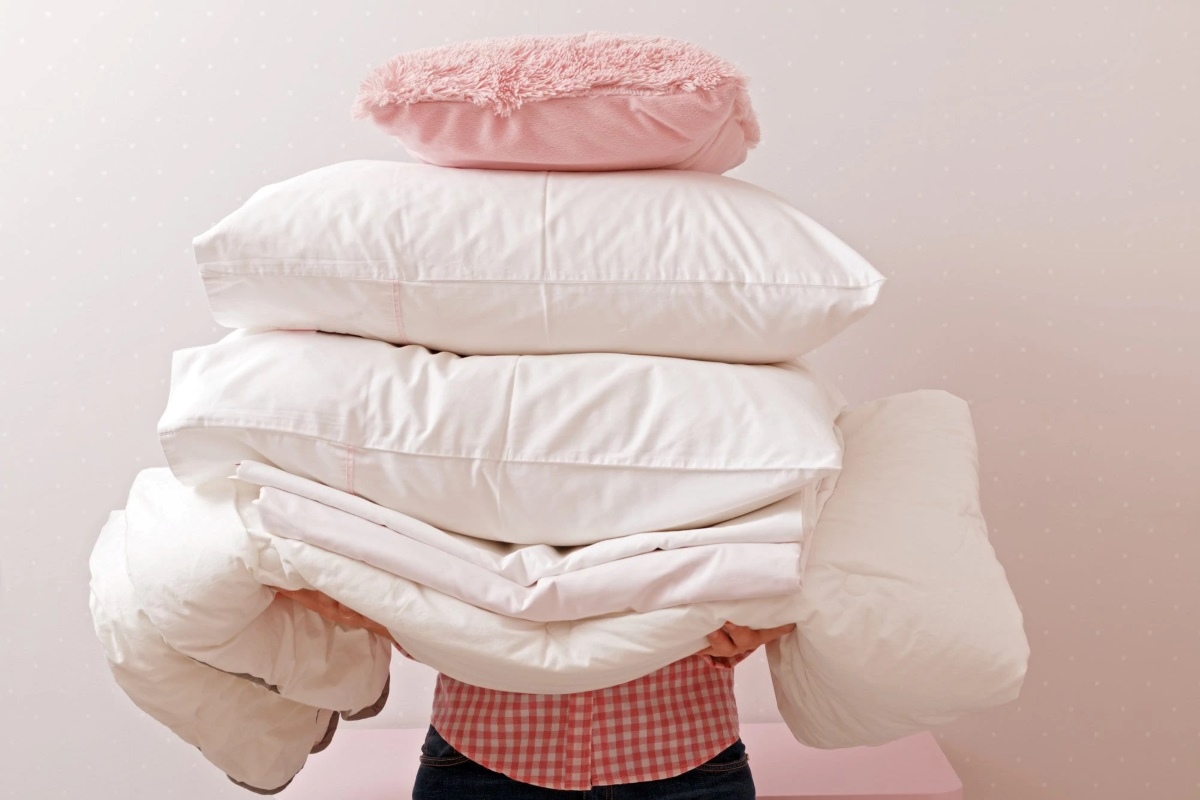

Articles
How To Store Pillows And Blankets
Modified: December 7, 2023
Discover the best methods for storing pillows and blankets in this informative article. Keep your bedding fresh and organized with these helpful tips.
(Many of the links in this article redirect to a specific reviewed product. Your purchase of these products through affiliate links helps to generate commission for Storables.com, at no extra cost. Learn more)
Introduction
Pillows and blankets are essential items that provide comfort and warmth in our daily lives. Whether it’s for a good night’s sleep or cozying up on the couch, these soft and fluffy accessories play a significant role in our overall comfort and well-being. However, when not in use, it’s important to properly store pillows and blankets to keep them clean, fresh, and in good condition for future use. In this article, we will explore the reasons why proper storage is necessary and provide tips on how to store pillows and blankets effectively.
Properly storing pillows and blankets ensures their longevity and helps to maintain their shape, cleanliness, and overall quality. It prevents them from becoming damaged, accumulating dust, or developing unpleasant odors over time. By following the right storage methods, you can preserve the softness, fluffiness, and comfort of your pillows and blankets, so they are in great condition whenever you need them.
Moreover, storing pillows and blankets properly also helps to save space and keep your home organized. With the right storage containers and techniques, you can neatly pack away your pillows and blankets, creating more room in your closets or storage areas.
Whether you need to store seasonal bedding, extra pillows, or sentimental blankets, these storage tips will help you keep them in the best possible condition. So, let’s dive into the details of how to store pillows and blankets effectively.
Key Takeaways:
- Properly storing pillows and blankets is crucial for maintaining their quality, cleanliness, and longevity, ensuring they remain fresh and in excellent condition for future use.
- From cleaning and preparing to choosing the right storage containers, considering climate control, and regularly maintaining, these tips help preserve the integrity of stored pillows and blankets.
Read more: How To Fold Blankets Into Pillows
Why You Need to Properly Store Pillows and Blankets
Properly storing pillows and blankets is not just about keeping them organized; it is essential for their longevity and maintaining their quality. Here are some reasons why you need to pay attention to proper storage:
1. Protection from Dust and Allergens: When pillows and blankets are left unprotected, they can accumulate dust, dirt, and allergens. This can lead to discomfort, allergies, and even respiratory issues for individuals who are sensitive or have allergies. Proper storage in sealed containers or bags helps to prevent dust particles and allergens from settling on the fabric.
2. Maintaining Cleanliness and Freshness: Storing pillows and blankets in clean and dry conditions helps to maintain their cleanliness and freshness. By keeping them protected from moisture, stains, and odors, you can ensure that they are ready to use whenever you need them.
3. Preserving Shape and Fluffiness: Improper storage can cause pillows and blankets to lose their shape, become flat, and lose their fluffiness. Storing them in a way that maintains their original shape helps to retain their comfort and visual appeal.
4. Preventing Damage: Pillows and blankets can get damaged if not stored properly. Being compressed or folded incorrectly can lead to lumps, creases, or tears in the fabric. Optimal storage methods protect them from physical damage, ensuring they remain in good condition for a longer period of time.
5. Space Optimization: Properly storing pillows and blankets helps to save space in your closets or storage areas. By using the right storage containers or bags and organizing them efficiently, you can maximize the available space and keep your home more organized.
6. Convenience and Preparedness: Storing pillows and blankets properly means you will always have fresh and clean bedding readily available. This is particularly useful for times when you have guests, during seasonal changes, or when you simply want to switch out your bedding for a different style or material.
Now that you understand the importance of properly storing pillows and blankets, let’s explore some helpful tips to ensure you store them effectively.
Tips for Storing Pillows and Blankets
Proper storage techniques will help protect your pillows and blankets from dust, damage, and moisture, ensuring they remain fresh and in good condition. Here are some tips to help you store your pillows and blankets effectively:
- Clean and Prepare Your Pillows and Blankets: Before storing your pillows and blankets, make sure they are clean and dry. Follow the care instructions on the labels for washing and drying. Properly cleaning them removes any dirt, stains, or odors, ensuring they are fresh and ready for storage.
- Choose the Right Storage Containers or Bags: Select containers or bags that are clean, sturdy, and breathable. Avoid using plastic bags as they can trap moisture and cause mold or mildew growth. Instead, opt for fabric storage bags, vacuum-sealed bags, or breathable plastic containers. This allows air circulation while keeping your pillows and blankets protected.
- Consider Climate Control and Moisture Protection: If you live in an area with high humidity or fluctuating temperatures, moisture can damage your pillows and blankets. Consider using moisture-absorbing products like silica gel packets or dehumidifiers to maintain a dry storage environment.
- Avoid Direct Sunlight and Heat Exposure: Direct sunlight and excessive heat can fade the colors and deteriorate the fibers of your pillows and blankets. Choose a storage location away from windows or heat sources to prevent any damage caused by prolonged exposure to sunlight or high temperatures.
- Properly Fold and Stack Your Pillows and Blankets: Fold your pillows and blankets neatly to minimize creasing and ensure they retain their shape. Use acid-free tissue paper or cotton sheets to layer between folded items. When stacking them, place heavier items at the bottom and lighter items on top to prevent crushing.
- Label and Organize Your Storage Area: Label your storage containers or bags to easily identify the contents. Store similar items together for easy access when needed. Keeping your storage area organized will save you time and effort when searching for specific pillows or blankets.
- Regularly Check and Maintain Your Stored Pillows and Blankets: Periodically inspect your stored pillows and blankets for any signs of damage, moisture, or pests. Ensure that the storage containers or bags remain sealed and in good condition. If necessary, re-clean or air out your stored items to keep them fresh.
Following these tips will help ensure that your pillows and blankets are stored in optimal conditions, preserving their cleanliness, freshness, and quality for future use.
Now that you are equipped with the knowledge to store your pillows and blankets properly, you can enjoy the benefits of having clean, fresh, and well-preserved bedding whenever you need it.
Clean and Prepare Your Pillows and Blankets
Before storing your pillows and blankets, it’s essential to clean and prepare them properly. This step ensures that they are fresh, free from dirt, stains, and odors, and ready for storage. Here are some guidelines to follow:
- Check the Care Instructions: Before cleaning your pillows and blankets, read the care labels to understand the manufacturer’s recommendations. Different materials may require specific care instructions, such as machine washing or dry cleaning. Following these guidelines will help prevent any damage to the fabric or filling.
- Machine Washable Items: If your pillows and blankets are machine washable, place them in the washing machine according to the care instructions. Use a mild detergent and select the appropriate water temperature for the fabric. Avoid using bleach unless specifically recommended by the manufacturer.
- Handwashing Delicate Items: For delicate pillows and blankets that require handwashing, fill a basin or sink with lukewarm water and add a gentle detergent. Gently swirl the items in the soapy water, paying attention to any stained areas. Rinse thoroughly until the water runs clear.
- Spot Cleaning: If there are specific stains on your pillows or blankets, spot clean them before washing. Use a mild detergent or stain remover that is safe for the fabric. Apply the solution to the stained area and gently blot or rub with a clean cloth. Rinse with water to remove any residue.
- Drying: After cleaning, it’s important to dry your pillows and blankets thoroughly before storing them. If the care instructions permit, machine dry them on a gentle cycle with low heat. Alternatively, you can air dry them outdoors or lay them flat on a clean, dry surface indoors. Make sure they are completely dry to prevent the growth of mold or mildew.
- Fluffing: Once your pillows and blankets are dry, fluff them gently to restore their shape and loft. Shake them out and fluff them by hand or tumble them in a dryer on a no-heat or air-only cycle. This step ensures that the filling is evenly distributed and the items are comfortable and inviting when used again.
By cleaning your pillows and blankets before storing them, you remove any dirt, stains, or odors that may have accumulated. This ensures that they are fresh and ready to use when you take them out of storage in the future. Additionally, cleaning them helps to maintain the integrity of the fabric and filling, prolonging the lifespan of your cherished bedding items.
Make sure to follow the care instructions provided by the manufacturer to avoid any damage during the cleaning process. With clean and prepared pillows and blankets, you can proceed to the next step of properly storing them.
Choose the Right Storage Containers or Bags
Once you have cleaned and prepared your pillows and blankets, it’s important to choose the right storage containers or bags to keep them protected during storage. The proper storage containers will ensure that your items stay clean, free from dust, and in good condition. Here are some considerations when selecting storage containers or bags:
- Clean and Dry Containers: Before using any storage containers, make sure they are clean and dry. Wipe them down with a damp cloth to remove any dust or dirt. Moisture inside the containers can lead to mold or mildew, so ensure they are completely dry before placing your items inside.
- Breathable Fabrics and Materials: Avoid using airtight plastic containers as they can trap moisture and potentially cause damage to your pillows and blankets. Instead, opt for fabric storage bags or breathable plastic containers. These materials allow for air circulation, preventing any moisture build-up and keeping your items fresh.
- Vacuum-Sealed Bags: Vacuum-sealed bags are a popular choice for storing pillows and blankets, especially if you are looking to save space. These bags allow you to remove excess air, reducing the bulk of your items. However, it’s important to note that vacuum-sealing can compress your pillows and blankets, potentially affecting their fluffiness. If you opt for vacuum-sealed bags, make sure to fluff your items once they are removed from storage.
- Size and Capacity: Choose storage containers or bags that are appropriately sized for your pillows and blankets. This will prevent excessive folding or stuffing, which could lead to creases or damage to the fabric. Consider the dimensions and thickness of your items and select containers that offer enough space without being too cramped or oversized.
- Labeling: To make it easy to identify the contents of your storage containers, label them with a description or category. This will save you time and effort when searching for specific pillows or blankets in the future.
- Stackability: Storage containers that are stackable help optimize storage space. Look for containers that are designed to be stackable, ensuring stability and efficient use of your storage area.
By choosing the right storage containers or bags, you can protect your pillows and blankets from dust, dirt, and moisture during storage. Remember to select breathable materials, ensure containers are clean and dry, and consider the size and stackability of the containers to maximize space efficiency. With the ideal storage containers or bags, you can confidently store your pillows and blankets while keeping them in excellent condition until they are needed again.
Read more: How To Make A Fort With Pillows And Blankets
Consider Climate Control and Moisture Protection
When storing pillows and blankets, it’s crucial to consider the climate and take measures to protect them from excess moisture. Moisture can lead to mold, mildew, and unpleasant odors, compromising the quality of your items. Here are some tips to ensure climate control and moisture protection:
- Choose a Dry Storage Area: Select a storage area that is dry and free from humidity. Basements and attics are generally not ideal due to their fluctuating temperatures and potential for moisture. Instead, opt for a closet or a controlled indoor environment with stable humidity levels.
- Use Moisture-Absorbing Products: To prevent moisture buildup inside your storage containers, consider using moisture-absorbing products such as silica gel packets or desiccants. These small packets help absorb excess moisture and maintain a dry environment for your pillows and blankets.
- Dehumidifiers: If you live in an area with high humidity, consider using a dehumidifier in your storage area. This device helps to regulate the humidity levels and prevent moisture-related issues.
- Avoid Plastic Bags: While plastic bags may seem like a convenient option for storing pillows and blankets, they can trap moisture and contribute to the growth of mold or mildew. Opt for breathable fabric storage bags or breathable plastic containers instead.
- Check for Leaks: Before placing your pillows and blankets in storage, inspect the storage area for any signs of leaks or water damage. Ensure that the area is well-sealed and protected from potential water leaks or condensation.
- Keep Adequate Air Circulation: Good air circulation is important to prevent the buildup of moisture. Avoid tightly packing your storage containers or bags. Leave some space for air to flow around the items, allowing them to breathe and lowering the risk of moisture-related issues.
By considering climate control and moisture protection, you can help maintain the freshness and quality of your stored pillows and blankets. By keeping them in a dry environment and utilizing moisture-absorbing products or dehumidifiers, you minimize the risk of mold, mildew, and odors. This ensures that your pillows and blankets will remain in excellent condition until you’re ready to use them again.
Now that you understand the importance of climate control and moisture protection, you can proceed to store your pillows and blankets with confidence, knowing that they are properly safeguarded.
To store pillows and blankets, use vacuum-sealed bags to save space and protect from dust and pests. Store in a cool, dry place to maintain freshness.
Avoid Direct Sunlight and Heat Exposure
When storing pillows and blankets, it’s crucial to protect them from direct sunlight and excessive heat. Prolonged exposure to sunlight and high temperatures can cause damage to the fabric, fade colors, and degrade the quality of your items. Here are some tips to prevent direct sunlight and heat exposure:
- Select a Suitable Storage Location: Choose a storage area that is away from windows or areas with direct sunlight. Sunlight can fade colors and weaken the fibers of your pillows and blankets over time, leading to diminished quality.
- Avoid Heat Sources: Keep your stored items away from heat sources such as radiators, heaters, or vents. Excessive heat can cause the fabric to shrink, warp, or become brittle. It is important to maintain a cool, dry environment for your pillows and blankets.
- Use Window Treatments: If your storage area has windows, use curtains, blinds, or window film to block or diffuse sunlight. This helps to reduce the direct exposure of your pillows and blankets to harmful UV rays.
- Consider UV Protection: If you have limited control over sunlight exposure, such as in an attic or sunroom, consider using storage bags or containers that offer UV protection. These specialized products minimize the impact of UV rays on your stored items.
- Rotate Stored Items: If you have a long-term storage situation where exposure to sunlight or heat is inevitable, periodically rotate your stored pillows and blankets. By switching them out and storing them in a cool, dark area, you can mitigate the effects of sunlight and heat damage.
- Store in Climate-Controlled Areas: If possible, store your pillows and blankets in a climate-controlled area within your home. These areas have stable temperatures and humidity levels, providing the ideal conditions for preserving your items. Examples include closets or storage rooms with central air conditioning or heating.
By taking precautions to avoid direct sunlight and heat exposure, you can preserve the integrity and visual appeal of your stored pillows and blankets. Protecting them from harmful UV rays and excessive heat ensures that they remain in excellent condition, ready to be used when you need them next. Consider these tips when choosing a storage location and organizing your stored items.
Now that you understand the importance of protecting your pillows and blankets from direct sunlight and heat exposure, you can proceed to store them in a safe and suitable location, taking steps to maintain their quality.
Properly Fold and Stack Your Pillows and Blankets
Properly folding and stacking your pillows and blankets is essential to prevent creases, maintain their shape, and optimize storage space. Here are some tips to help you fold and stack your items effectively:
- Flatten and Straighten: Before folding, shake out your pillows and blankets to remove any wrinkles or lumps. Smooth them out to ensure they are flat and even.
- Follow the Natural Folds: Pillows and blankets often have natural folds or creases. When folding, try to follow these natural lines to prevent excessive creasing and maintain the original shape of the items.
- Use Acid-Free Tissue Paper: For delicate or sentimental items, consider placing acid-free tissue paper or cotton sheets between folded layers. This helps to protect the fabric and prevent any color transfer or friction-related damage.
- Neatly Fold: Fold your pillows and blankets neatly to minimize wrinkles and ensure they fit well in your chosen storage containers or bags. Tri-folding or folding them in half typically works well, but adjust the folding method based on the size and thickness of your items.
- Stack Heavier Items at the Bottom: When stacking pillows and blankets, place the heavier or bulkier items at the bottom. This helps to distribute weight evenly and prevents crushing or flattening of the items underneath.
- Layer with Care: If stacking multiple pillows or blankets, place a layer of acid-free tissue paper or cotton sheets between each item. This provides additional cushioning and prevents friction between the fabrics, minimizing the risk of damage.
- Avoid Overstuffing: It’s important not to overstuff your storage containers or bags. Leave enough room to ensure your pillows and blankets are not compressed or squeezed tightly, as this can lead to creasing or distortion of their shape.
- Label and Organize: As you stack your pillows and blankets, label the containers or bags for easy identification. Organize them by type, size, or season, depending on your preference. This helps you locate specific items quickly when needed.
By following these folding and stacking tips, you ensure that your pillows and blankets are stored neatly and maintain their original shape. These methods also help to optimize storage space and make it easier to access specific items when necessary.
Remember, take extra care with delicate or special items by using acid-free tissue paper or cotton sheets to protect the fabric. This ensures that your stored pillows and blankets stay in excellent condition until you’re ready to use them again.
With your pillows and blankets properly folded and stacked, you can proceed to label and organize your storage area for a more efficient and enjoyable storage experience.
Label and Organize Your Storage Area
Labeling and organizing your storage area is essential for easy access and efficient retrieval of your stored pillows and blankets. Proper organization not only saves you time and effort when searching for specific items but also helps maintain the condition of your stored belongings. Here are some tips to help you label and organize your storage area effectively:
- Choose Clear and Legible Labels: Use clear and legible labels to identify the contents of your storage containers or bags. Whether you use stickers, tags, or markers, ensure that the labels are easy to read and remain intact over time.
- Categorize Items: Group your pillows and blankets into categories based on their types, sizes, or seasons. This makes it easier to locate specific items when needed. For example, you can have separate sections for decorative pillows, duvets, or winter blankets.
- Arrange by Frequency of Use: If you have items that you use more frequently, position them at the front or in easily accessible locations. Reserve the back or higher shelves for seasonal or less frequently used pillows and blankets.
- Maximize Storage Space: Utilize shelving, bins, or hanging organizers to maximize the available storage space. This helps to keep your storage area neat and clutter-free, ensuring efficient use of the space.
- Create an Inventory List: Maintain an inventory list of the items you have stored. Note down the contents of each container or bag, and update the list whenever you add or remove items. This helps you keep track of what you have and avoid unnecessary searching.
- Consider Stacking Containers: Stackable storage containers can be a great space-saving option. Ensure that the containers are sturdy and secure when stacked to prevent accidents or damage to the items inside.
- Keep a Clean Storage Area: Regularly dust and clean your storage area to prevent the accumulation of dirt and dust on your stored pillows and blankets. A clean and well-maintained storage area helps to keep your items in better condition and prolongs their lifespan.
By labeling and organizing your storage area, you create a system that allows for easy retrieval and ensures that your stored pillows and blankets remain in good condition. It reduces the chances of items getting misplaced or damaged during storage.
Take the time to categorize, label, and arrange your storage area according to your personal preferences. This will save you time and frustration in the future when you need to locate specific pillows or blankets.
With a well-organized storage area, you can rest assured that your pillows and blankets are easily accessible, well-preserved, and ready for use whenever you need them.
Read more: How To Store Blankets
Regularly Check and Maintain Your Stored Pillows and Blankets
Regularly checking and maintaining your stored pillows and blankets is essential to ensure their long-term preservation and quality. By periodically inspecting them and taking necessary measures, you can prevent any potential damage or issues. Here are some tips for regularly checking and maintaining your stored items:
- Inspect for Damage: Regularly inspect your stored pillows and blankets for any signs of damage such as tears, fraying, or loose stitching. Address any issues promptly to prevent further damage.
- Check for Moisture or Mold: Look for any signs of moisture, mildew, or mold growth on your items or inside the storage containers. If you notice any, remove the affected items, dry them thoroughly, and address the source of the moisture to prevent future issues.
- Fluff or Rotate: Periodically fluff your stored pillows and blankets to restore their loft and maintain their shape. If you have items that have been stored for a longer period, consider rotating them with items that are in regular use to distribute the wear and maintain consistency.
- Reorganize or Repack: Over time, you may need to reorganize or repack your stored items to optimize space or accommodate new additions. Take the opportunity to tidy up, refold if necessary, and ensure that everything is well-organized and easily accessible.
- Address Pest Issues: Check for any signs of pests such as insects or rodents in your storage area. If you notice any infestation, take appropriate measures to eliminate the pests and protect your stored items from damage.
- Air-Out Occasionally: To maintain freshness, occasionally air out your stored pillows and blankets. Take them outside on a sunny day or leave them in a well-ventilated area indoors to let them breathe and prevent any stale odors.
- Replace Storage Containers: If you notice that your storage containers have become damaged, worn out, or no longer offer adequate protection, consider replacing them. Sturdy, clean containers are crucial for maintaining the condition of your stored items.
By regularly checking and maintaining your stored pillows and blankets, you can address any issues or concerns promptly, ensuring that your items remain in excellent condition over time. This proactive approach helps extend their lifespan and ensures that they are ready for use whenever you need them.
Set a reminder to inspect your stored items periodically, whether it’s every few months, once a year, or before transitioning between seasons. This way, you can maintain the quality of your pillows and blankets and enjoy their comfort and coziness for years to come.
Conclusion
Properly storing pillows and blankets is essential for maintaining their quality, cleanliness, and longevity. By following the tips outlined in this article, you can ensure that your beloved bedding items stay fresh, protected, and in excellent condition until you need them again.
From cleaning and preparing your pillows and blankets to choosing the right storage containers or bags, considering climate control and moisture protection, and avoiding direct sunlight and heat exposure, each step plays a vital role in preserving the integrity of your stored items.
Folding and stacking your pillows and blankets correctly, labeling and organizing your storage area, and regularly checking and maintaining your stored items contribute to the overall success of proper storage. These practices make it easier to access specific items, prevent damage, and help you make the most of your storage space.
By taking the time and effort to store your pillows and blankets properly, you can enjoy the benefits of having fresh, clean, and well-preserved bedding whenever you need it. Whether you’re swapping out seasonal bedding, keeping extra pillows and blankets on hand for guests, or preserving sentimental items, these storage tips will ensure that your linens stay in great condition.
Remember, while these guidelines provide a solid foundation for storing pillows and blankets, always consider the specific care instructions provided by the manufacturer. Each item may have unique requirements that you should follow to avoid any damage or loss of quality.
So, start implementing these storage techniques to protect and prolong the life of your pillows and blankets. With proper storage, you can rest easy knowing that your bedding items are stored in optimal conditions, ready to provide comfort, warmth, and coziness whenever you desire.
Frequently Asked Questions about How To Store Pillows And Blankets
Was this page helpful?
At Storables.com, we guarantee accurate and reliable information. Our content, validated by Expert Board Contributors, is crafted following stringent Editorial Policies. We're committed to providing you with well-researched, expert-backed insights for all your informational needs.


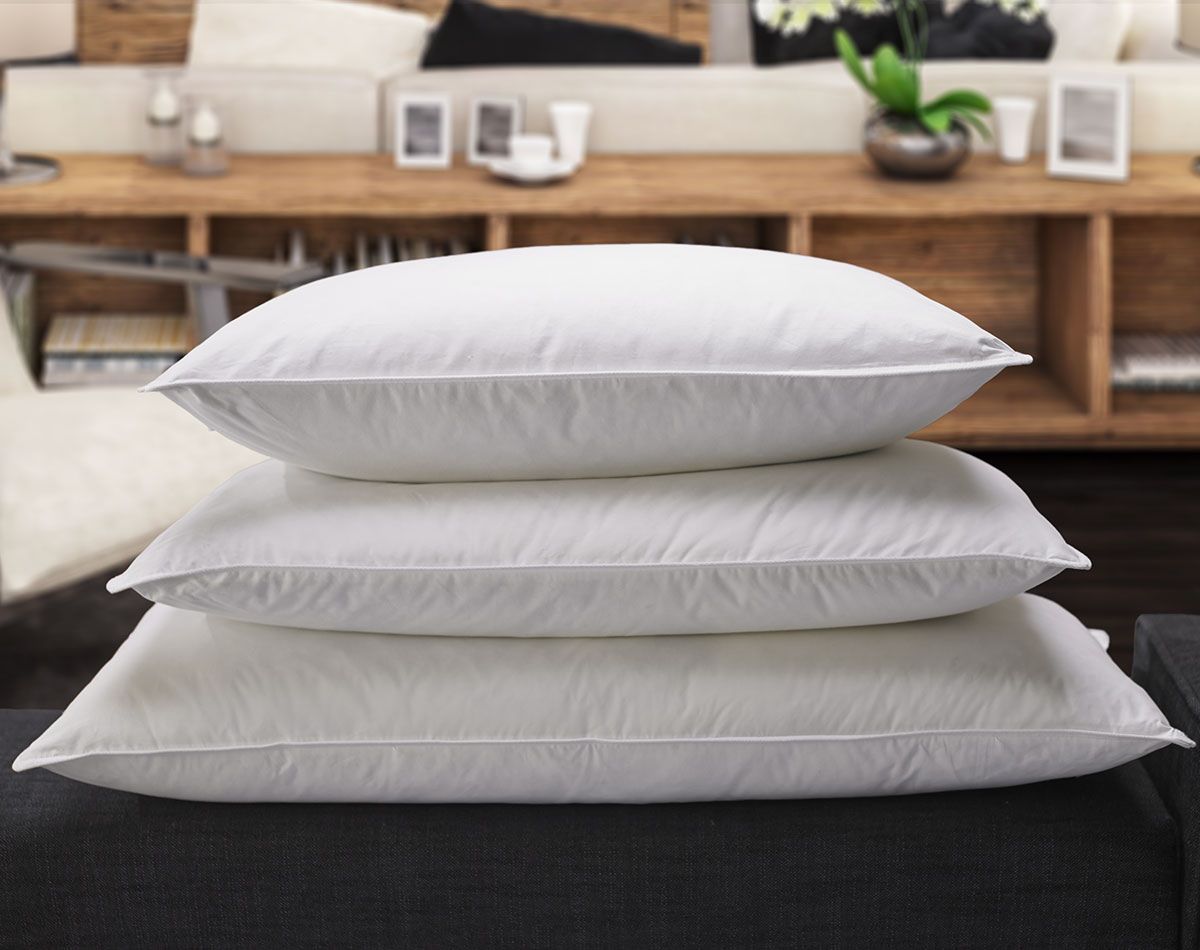



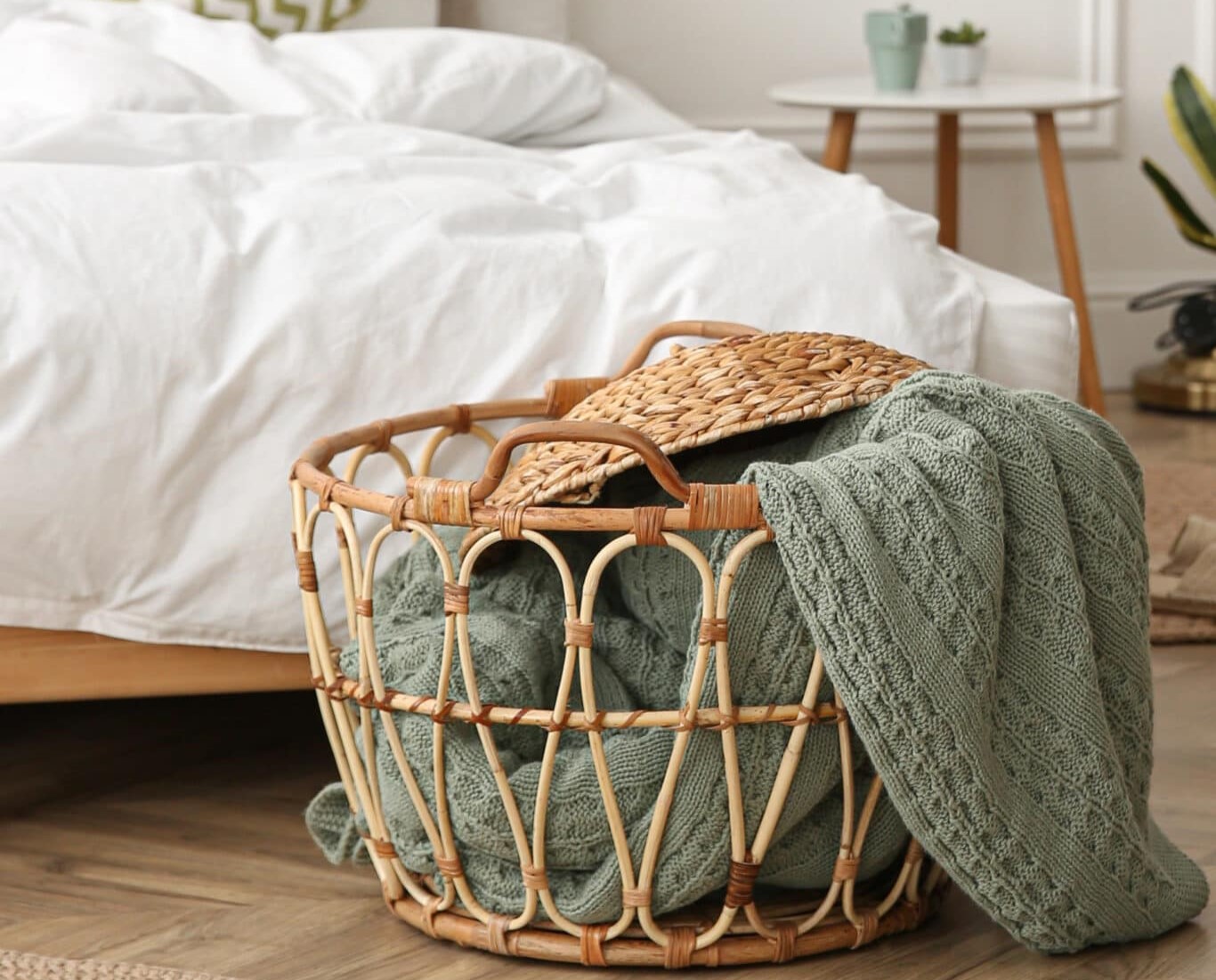
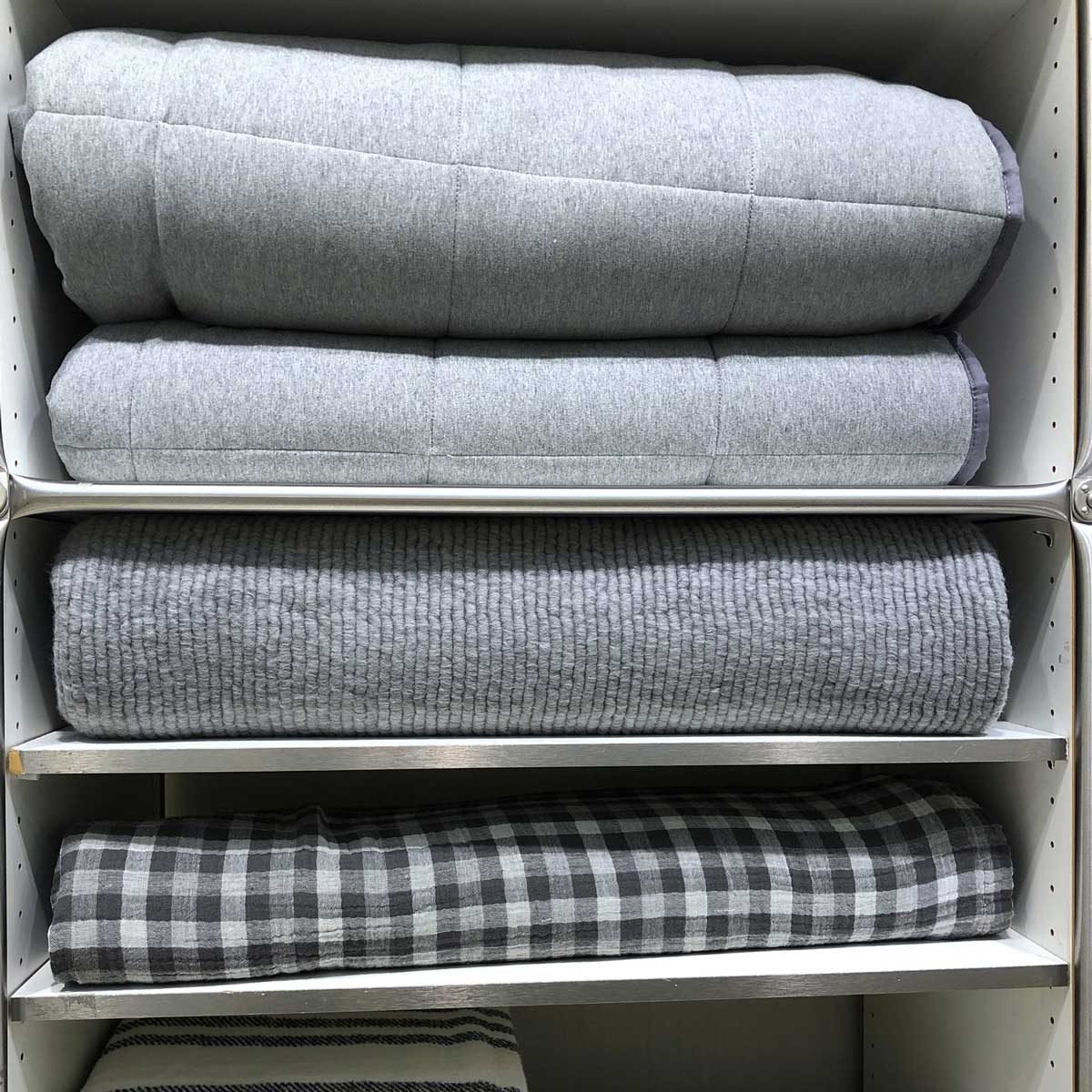
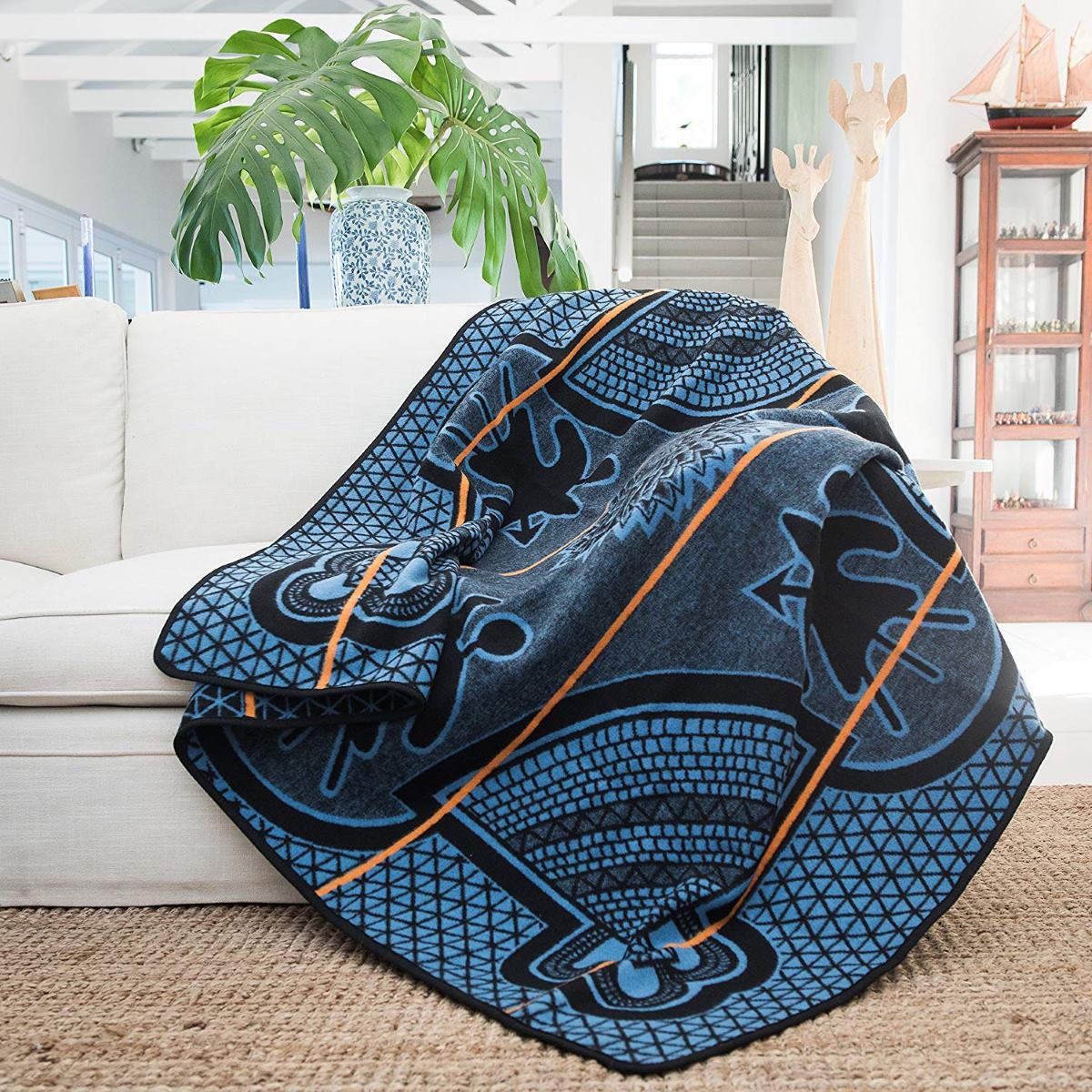
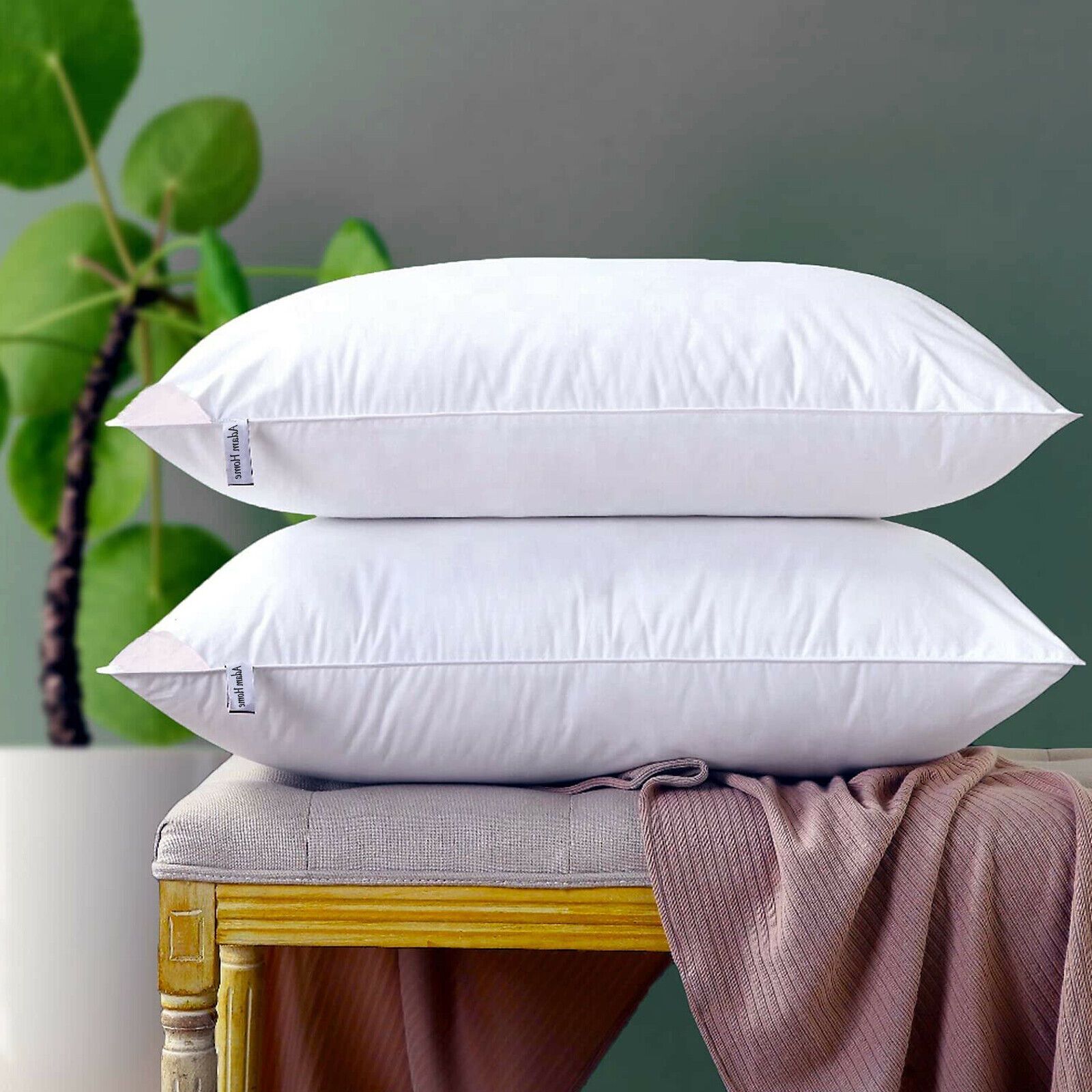




0 thoughts on “How To Store Pillows And Blankets”